SAT math no calculator practice is important! Why? Let me give you an example.
You’re sitting in class when your teacher asks “What is 168 divided by 34?”
In a matter of seconds, a couple of students whip out their handy calculators… it’s almost a race. But you have the upper hand! Your calculator is sitting right on top of your desk.
Before anyone else can, you punch in those numbers and read the answer displayed neatly on the small screen:
“4.9!”
You’re rounding, of course. The actual answer is something like 4.94117647058824.
Pretty simple, right? Calculators are AH-mazing tools that we can use today to answer the majority of math problems.
But what if you didn’t have one? What if it’s not ALLOWED?
On the SAT you will be given 25 minutes to answer 15 math questions. Here’s the catch. For these 15 questions, NO CALCULATOR ALLOWED.
Don’t panic! We have listed some general tips and specific techniques to help you increase your SAT Math score.
Table of Contents
SAT math no calculator practice general tips
1. If it’s taking too long, it’s wrong.
The no-calculator questions on the SAT are just that — questions that don’t require a calculator.
You’re not set up to fail here!
These problems are possible to solve without pulling out your favorite tool. Which means if they’re taking a long time to solve without a calculator, you’ve probably taken a wrong turn. A good tip here would be, analyze the question first before diving into your computation. Or in other words, think first before anything else. This will help you save time in complicating items which only require simple answers.
2. Study those concepts
Knowledge gaps are one of the common causes of failure in the SAT no-calculator test. Before gathering materials that you can use for review, make sure that you have read Chapter 15 of the SAT Study Guide published by College Board. That chapter focuses on the Mathematical concepts included in the SAT Math Section.
According to the College Board, the focus of the Math no-calculator test are the following:
1. Heart of Algebra
- Linear equations
- Systems of linear equations
- Functions
2. Problem Solving and Data Analysis
- Ratios
- Percentages
- Proportional reasoning
- Describing relationships shown graphically
- Analyzing statistical data
3. Passport to Advanced Math
- Math problems related to economics and STEM (Science, Technology, Engineering, Mathematics)
In your review, make sure that the material you are using is aligned to what we have mentioned above. Check out the table of contents of each book and scan the practice test to save you time and energy. Doing this will help increase your score which is a pre-requisite to get into your dream college.
3. Target your weak points
Check-in on your overall math skills in the arithmetic of fractions, negative numbers, and decimals to makes sure that you understand them well. Take a practice SAT test and note any problems that you struggle with or take longer than others on. Once you have already figured out what particular concepts you are finding difficult to answer, focus your time on reviewing them instead of going back to the topics that you can already answer with closed eyes.
If you keep on getting mistakes in those concepts even after reviewing on your own, try to find someone who knows a lot about that topic. Once you get better in solving, you’ll get to see a development in your practice test scores. And this is a big deal because we know how important test scores are for college admissions.
4. Understand how close reading works
Aside from testing your math skills, the SAT Math no-calculator section also tests your reading comprehension skills. Sometimes, the word problems are too wordy that we think the problem is too complicated. When in fact, it’s easy and the test creator just tricked US INTO thinking that it is hard.
Through learning how to apply close reading, you will be able to analyze the word problems better resulting to answering the question in a short period of time.
5. Practice doing problems without a calculator
Sometimes it can feel like our calculator is a security blanket. When you go to math class without it, you feel lost and useless…
So try working without a calculator for a week or so leading up to your SAT to build your confidence in pencil-solving math problems. You can still use it to double-check your answers but really aim to solve everything as if it wasn’t there.
During your Math subject in school, try your hardest to answer what your teacher is asking without using the mighty calculator. This way, you are also being practiced on how to deal with pressure which will help you in the actual test.
6. Keep a notebook containing your solutions
Another useful tip would be to keep a notebook containing the solutions to the problems that you have answered. This technique will easily help you track your progress and will show you what concepts you need to focus on. Your notebook will also prove useful in refreshing your brain about certain topics especially if you started reviewing early. Chances are, you have already forgotten those lessons. This will also help motivate you since you become more organized.
7. Look for practice tests online
This is probably the most useful tip in this list. To better understand the concepts you have reviewed, it is important to apply them and gauge what you have learned. A good way of doing this is through looking for practice tests online. Here are some of the practice tests we found online that you may find useful:
College Board Math SAT math no calculator practice (Calculator: Not Permitted)
Varsity Tutors Free SAT Math SAT math no calculator practice
Khan Academy SAT Math SAT math no calculator practice
PrepScholar Math Practice Test
Prep by Ivy Global Practice Test
In answering these practice tests, here a our tips:
- Time yourself.
- Take a test in one sitting to avoid being distracted
- Set a time for you to study
- Review the items you find difficulty answering
8. Get SAT prep help
If you really find it difficult to answer math problems even after spending a lot of time reviewing, we suggest that you get the help of a SAT Math expert or a tutor. There is no harm in seeking help. In fact, that’s when you will learn the most. Let’s admit, not everything about Math is easy. You will always come across a problem that seems unsolvable. By seeking the help of tutors or SAT prep experts, you become more guided in your reviews plus they can teach you tricks that you didn’t know existed. There are a lot of affordable services you can avail. It’s just a matter of patiently looking online or asking your guidance councelor for help.
9. Don’t let the problems scare you
Remember, the very FIRST tip I gave you in this article was that the problems are MADE to be solved without a calculator.
It’s waaay too easy to look at a foreign or complex-seeming problem on a test and think “That’s not what I studied! I don’t know this!” Cue the freakout…
When you encounter problems like these, take a deep breath.
Follow the steps outlined in our test anxiety article to keep your brain from spinning out of control and into panic mode. The MOST you can do is answer the question completely wrong, and remember that those points won’t count against you!
10. Pace yourself
If you really don’t know how to solve the problem, don’t spend all your time stuck on it when there are other problems you can answer right away. Come back to it at the end. This is one of the common strategies that are always overlooked because of pressure.
Also, if you pass the criteria of those who can apply for SAT extra time, use it so you can have more items answered.
SAT math no calculator practice specific techniques
11. Work with the smallest possible numbers
This trick will save you A LOT of time and stress.
Remove the 0’s
Let’s say you need to divide 280 by 30.
Divide by the common denominator
In fractions, you can often determine a common denominator which will help you to simplify the problem to where it is more easily solvable.
Check out this Khan Academy video that explains how to find the least common denominator of fractions!
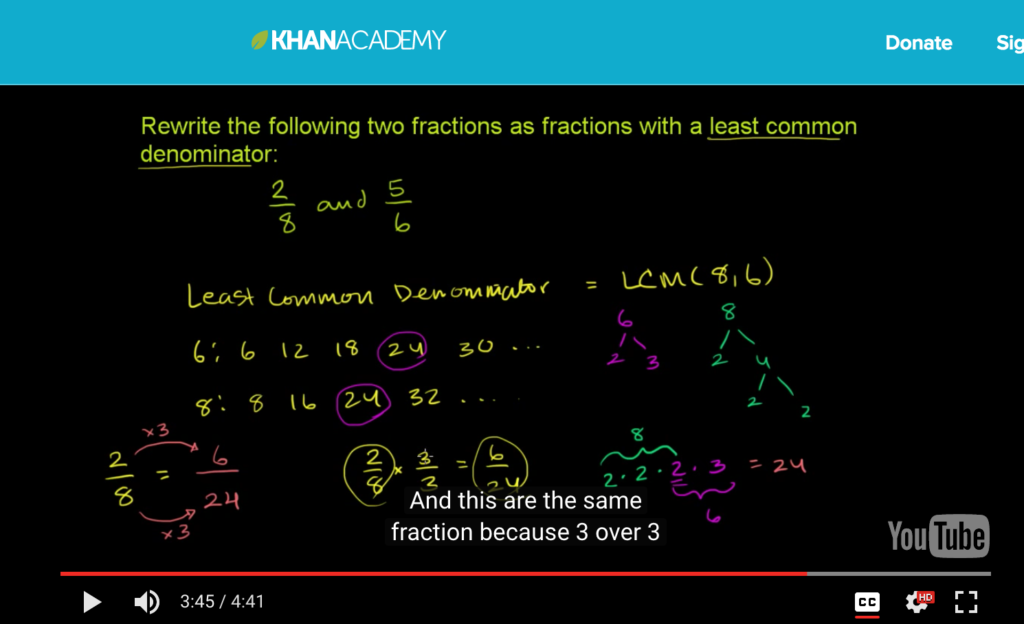
12. Memorize common fractions
Below is a chart you can reference for memorizing these. It includes the decimal and percentage forms of each fraction.
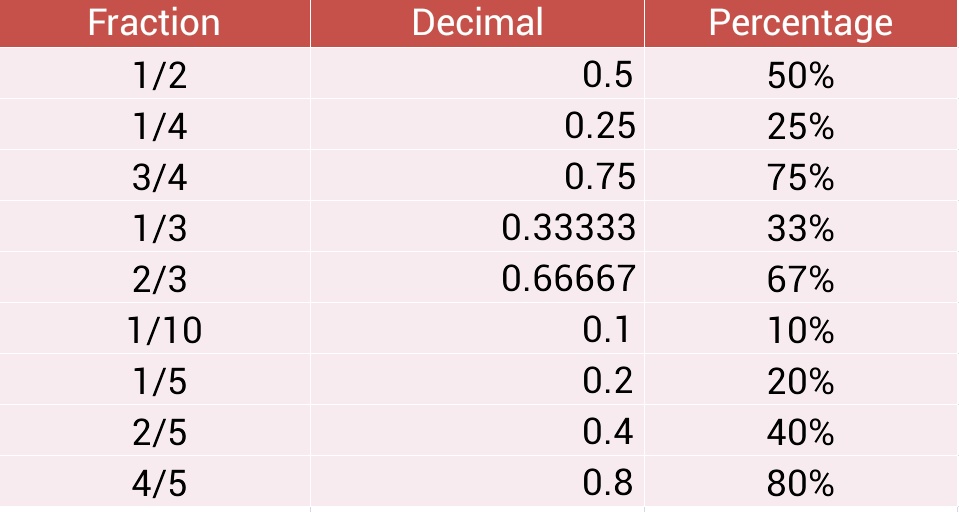
You should know that if you divide 1 by 2, it will give you .50 as the decimal of 1/2. When you multiply .50 x 100, you get 50%. If you get stuck, you can try checking this way.
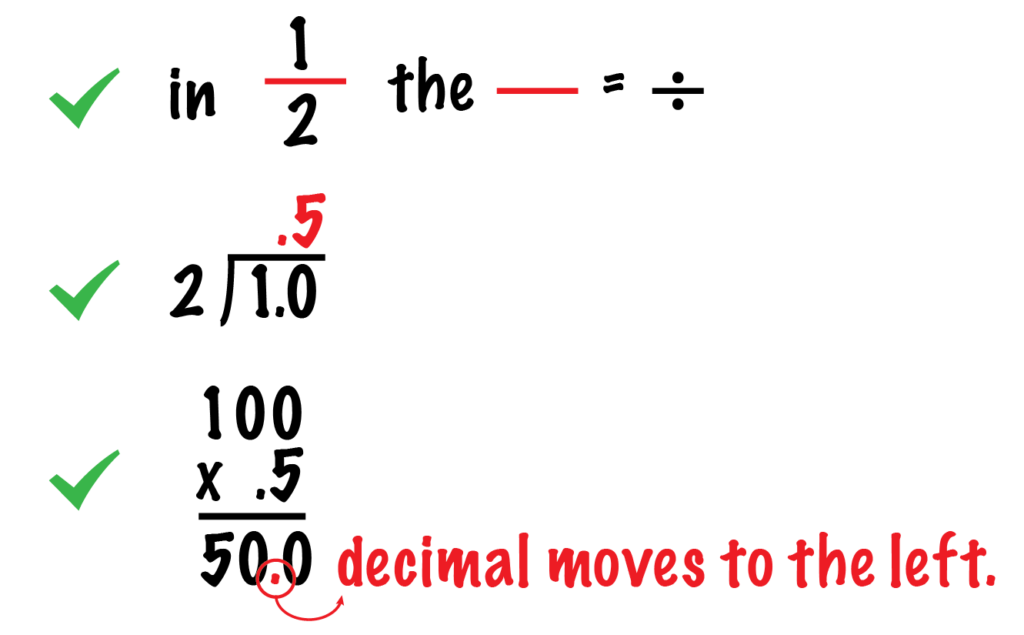
13. Know your multiplication tables through 15
You should practice the multiplication tables listed below to have them fresh in your mind when it comes to taking the SAT.
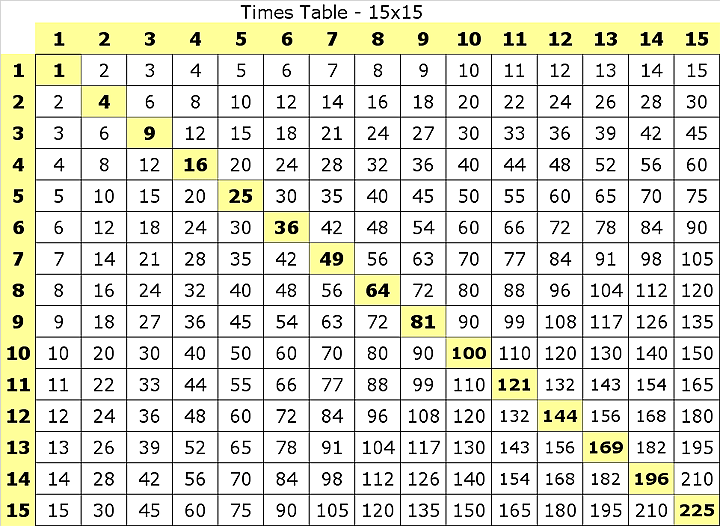
There are plenty of great sites out there to help you brush up on your multiplication skills.
- math-drills.com: Worksheets you can print out and time yourself on.
- multiplication.com: Multiplication games you can play to have fun while you’re re-learning.
- aplusmath.com: Flashcards where you can specify the range to be 1-18
We also have TWO lists of math websites for you on our blog:
14. Memorize the squares of integers
I recommend that you memorize the squares of integers up to 15. It’ll save you a lot of time trying to multiply these out by hand!
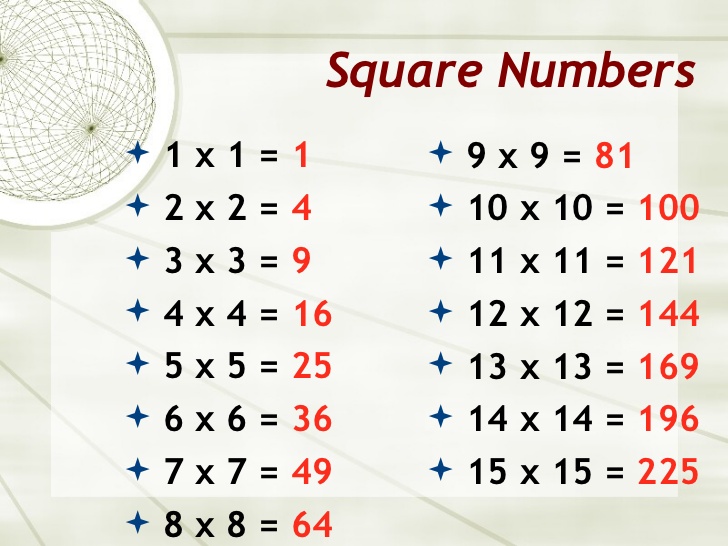
If you’re interested in learning some quick tricks to calculate the square roots of other numbers, check out the tecmath channel on Youtube! There’s some great videos there like:
15. Brush up on your Pythagorean triples
If you already forgot what Pythagorean triples are, they’re a set of 3 numbers that make up a right triangle.
The smallest P triple is 3, 4, 5.
The rule for whether or not something is a Pythagorean triple is a formula:
a² + b² = c²
This is why it helps to have your square integers memorized!
mathisfun.com is another great website that can help answer any questions you may have about this triangle business.
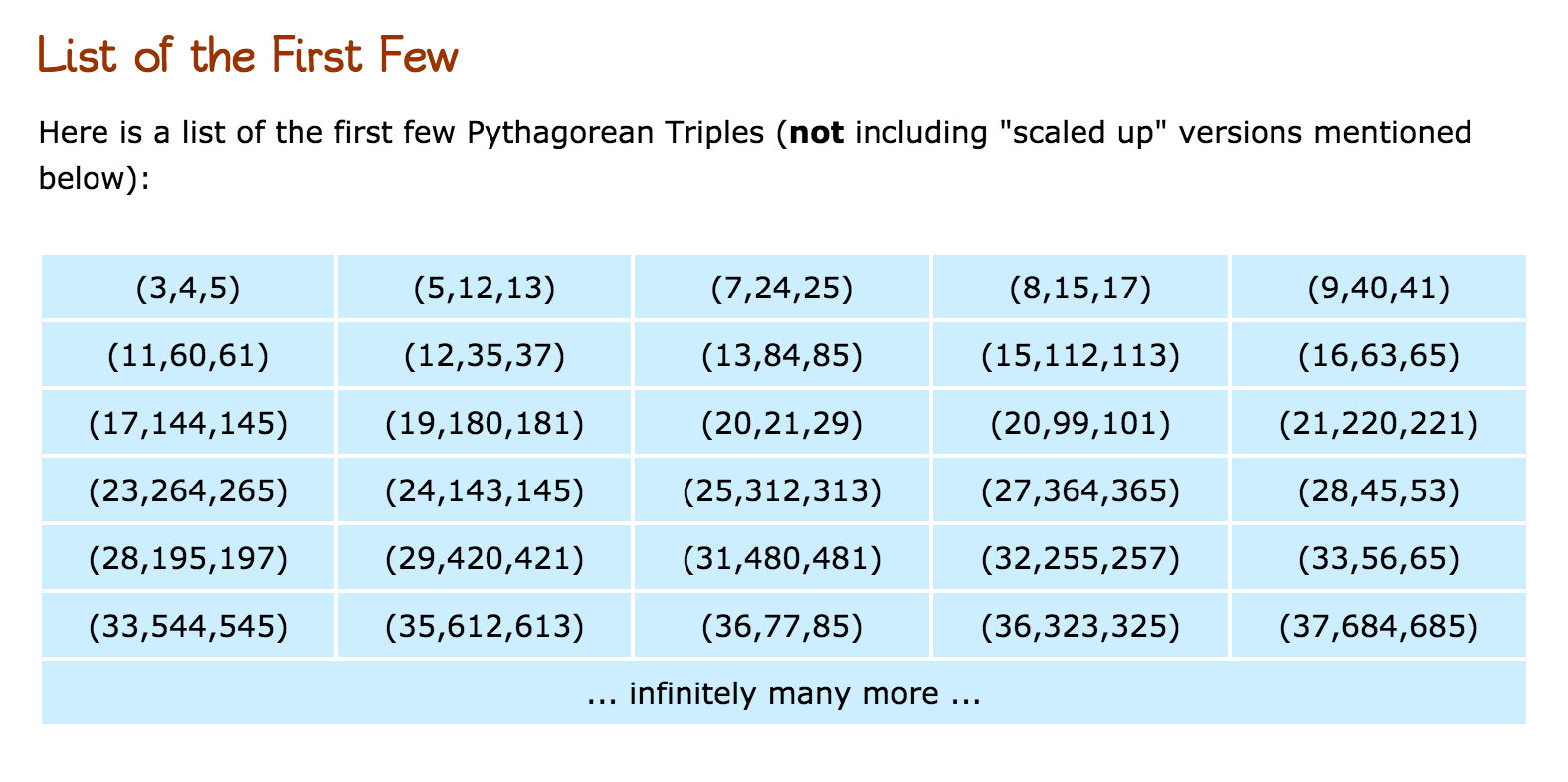
16. Don’t forget about triangles!
There are 3 special triangles in geometry:
- Equilateral
- Isosceles
- Scalene
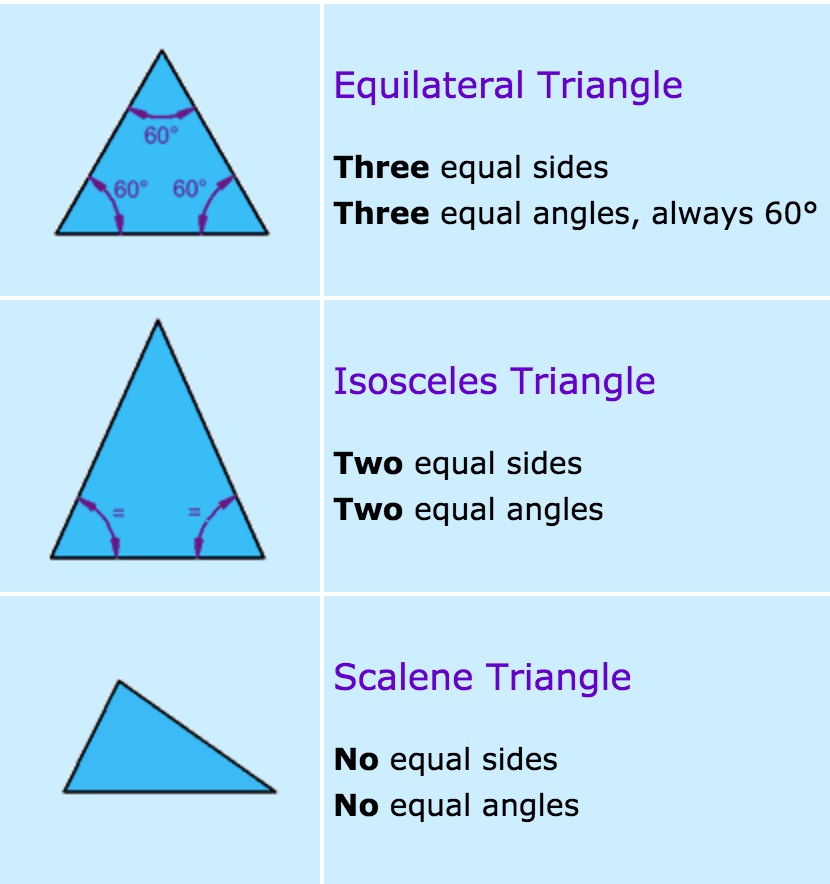
You may also want to take a look at the angles of different triangles.
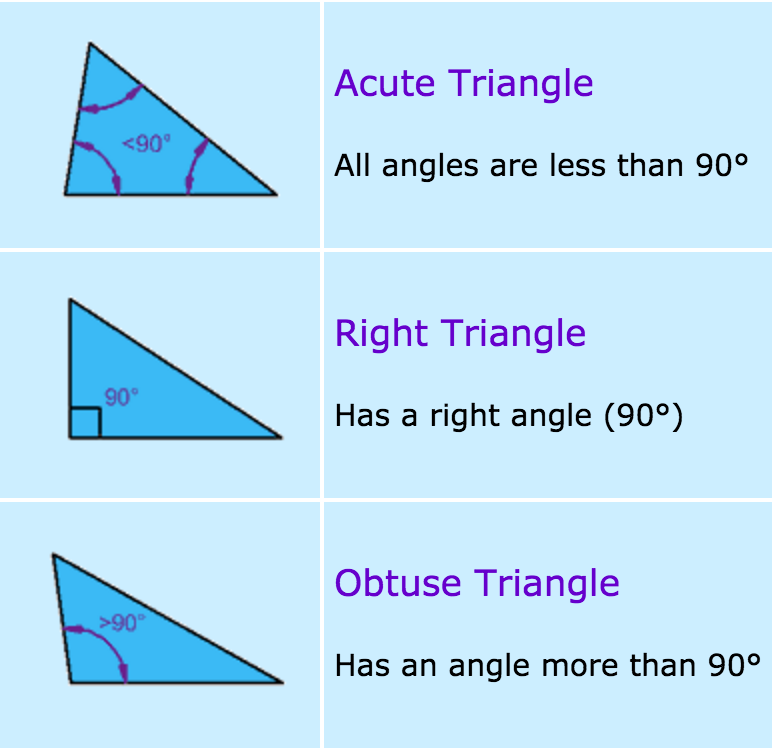
…BECAUSE, you can combine the two!

Again, head over to mathisfun to play with their interactive triangle — change the angles to change the triangle and learn more about calculating things like area and height!
Conclusion
I hope after giving you these tips that I’ve at least somewhat put your mind at ease about not having a calculator on a portion of the SAT.
You can do it, I promise!
If you want to learn more about the other SAT sections, read our article on the new SAT changes in infographics.
Know of any other tips or tricks for doing well on the non-calculator SAT math section? Tell us about it in the comments below!
Todd VanDuzer
Latest posts by Todd VanDuzer (see all)
- Why Finding the Right Thing to Study Matters: Setting the Foundation for Success - July 26, 2023
- How USA Staff Onboarding Benefits From Innovative Software - July 26, 2023
- Top 7 Best Reasons to Get an MBA - June 7, 2023
- How to Support Your Child When They Go to College - April 29, 2023
- How to Maximize Your Job Search with Expert Resume Writers Experienced in Your Field - April 20, 2023

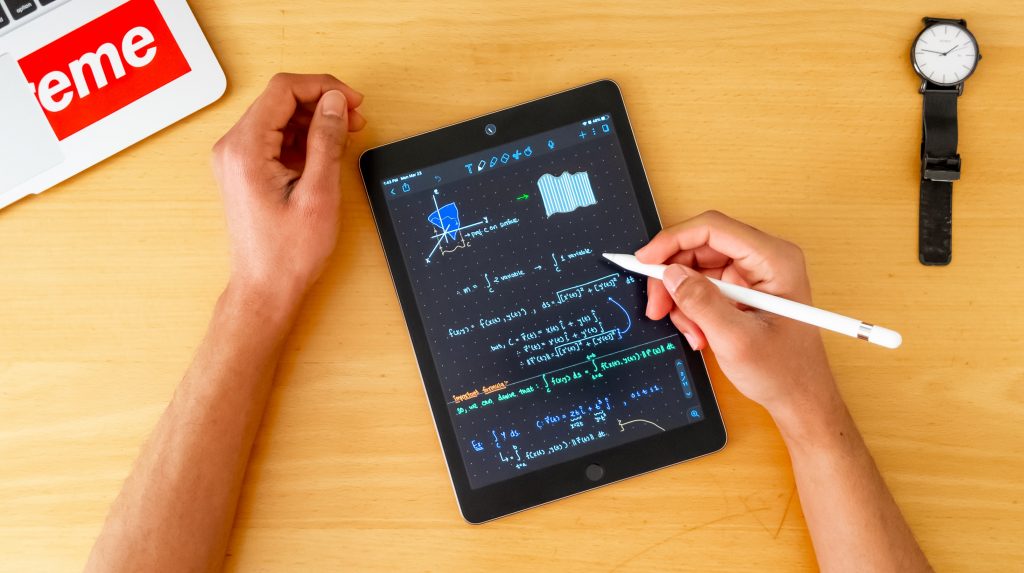
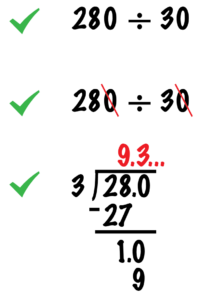
This article is really providing some hidden benefits on improving person’s ability. Now a days we come across students who cant even do small calculations without the help of calculator. Schools should teach students on how to solve problems rather than providing information on how to use calculators to solve a problem. There would be many situations where human need to calculate without any device. I have come across students who dont know basics even. Worth reading this article by students.
Thank you for the thoughtful comment Riley! It’s true, we do rely heavily these days on calculators to solve problems… and although they are a tremendously useful tool, it can still come in handy for students to know the mental shortcuts – I agree. Please feel free to share this article with any students or teachers that you know so they can put these tips to good use. 🙂